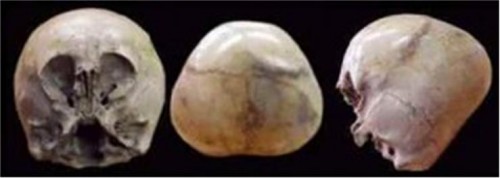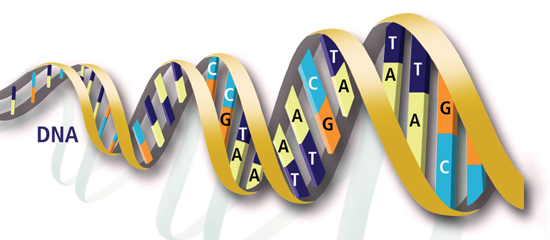
After years of speculation and arguments it seems the mystery of the now famous Starchild Skull is getting ever closer to being solved.
While the bulk of the scientific community calls it an anomalous human skull there are those on the fringe that believed the skull was alien or nonhuman in origin.
For 13 years the Starchild Project has been trying to code the DNA of the skull and up until now they have been unsuccessful in their attempts to prove the skull nonhuman. Now, in an apparent breakthrough a Geneticist on the project has recovered a fragment of the FOXP2 Gene and says unequivocally that the skull is not human.
If verified by others in the scientific world, this could be one of the biggest discoveries of our age.
Here’s the story straight from the Starchild Project:
A Fragment of the Starchild’s FOXP2 Gene is Recovered:
A New Partial Analysis Of DNA Reinforces That Absolute Proof Can Be Obtained To Confirm The Starchild Skull Is Not Human.
© Lloyd Pye, 2012
For 13 years we at the Starchild Project have known the Starchild Skull came from a being that was not entirely human, if human at all. First, it shares no physical characteristics with a normal human skull—none! Unfortunately, this astounding divergence in physical points of comparison never impressed mainstream scientists because they could, and often did, glibly explain all of them away by insisting: Nature can do anything! But that was never true.
Nature actually functions by strict rules that confine life to well-defined boundaries outlined by the unique genetic code of each species. No laws are more firmly established than the laws of genetics. Fifty eye-witnesses can say that a person committed a crime, but if DNA shows otherwise, the witnesses are ignored. DNA dominates in courts because it is the math of biology. It says what it says, again and again, with consistency you can stake your life on.
Within that life-and-death consistency, the human genome does contain slight variations. Tiny Pygmies and tall Watusis are black Africans with stark physical differences, yet both tribes are unmistakably human. Differences in their genetic makeup make it impossible for two Pygmies to produce a Watusi, and vice-versa. Yet DNA can flex enough so that if one of each tribe were to mate, they could produce viable offspring, although the flexibility does not go beyond certain points. Something is either human, or it isn’t. There is no in-between.
Because genetics is the math of biology, the Starchild’s DNA provided the only means to overcome the mainstream explanation that it has to be a one-in-a-billion freak of Nature. Unfortunately, we had to wait nearly a decade while the technology for recovering and sequencing “ancient” DNA, such as the 900-year-old Starchild’s, could be perfected.
Now such new technology has been in place for a few years, and its initial extraordinarily high cost has fallen within the reach of reasonable investment. Also, we now have enough partial analyses of the Starchild’s DNA to know without doubt that when we can afford a complete inventory of its genome, it will prove to be radically different from humans.
This essay is designed to make the most crucial information about those partial analyses understandable to anyone. If you can take the 15 minutes needed to read it, you will learn about the three kinds of partial proofs we now have, what each one means, and why they will help the Starchild make history on a scale that seldom occurs in human lifetimes.
Now I leave it to the reader. If you have the time and the inclination, I recommend that you read the essay. If nothing else, you can brush up on your DNA knowledge.
From New Scientist, Feb. 7, 2011 [text in brackets added]:
Fossils of the Denisovans, [a new extinct hominin and] close relative of Neanderthals, were discovered in Siberia in 2008. A draft genome was released in 2010 by Svante Pääbo of the Max Planck Institute for Evolutionary Anthropology in Leipzig, Germany, which revealed that Denisovans interbred with modern humans. However, each position in the genome was read only twice, so the fine detail was unreliable. The new genome covers each position 30 times over [so the fine detail is now highly reliable].
To understand the Starchild Skull’s unique situation, the short paragraph above must be understood. In 2010, the Max Planck laboratory secured two “reads” (short for readings) through what are called “next generation” sequencing machines. That means they made the first announcement of a draft assembly of the Denisova genome with the average depth of coverage being around two. Each assembly includes thousands to millions of individual readings, and the depth of coverage indicates how many times each reading is repeated.
The draft data would have included gaps that remained in certain areas of coverage in the entire genome, so while the result would be highly indicative (the reason they announced it), the gaps would make it basically unreliable. This is always the case when data are obtained with “next generation” sequencing methodologies. However, conducting many reads closes nearly all of the gaps, and ultimately provides a very high level of certainty for the results.
With the Starchild Skull, the partial results obtained by our geneticist at the DNA lab we work with are every bit as reliable, and as compelling, as those from Max Planck. He uses the same analytical techniques, and his results are what theirs are—partial but compelling. And, like the geneticists at Max Planck, to put our geneticist’s results beyond all doubt, he has to complete them at least 30 times over, to the same extraordinary level of certainty.
*****
To understand what our geneticist has accomplished so far, let’s start with nuclear DNA (nuDNA). It is found inside the nuclei of nearly all of the trillions of cells in human bodies (everything other than red blood cells and sex cells). It contains genetic material provided by our parents when our mother’s egg is fertilized by our father’s sperm. In humans, it produces a genome made up of over 3 billion base pairs comprised of what are called nucleotides.
In the illustration above, the four different nucleotides are distinguished by their chemical bases—Cytosine with Guanine, and Thymine with Adenine. Working together while always matched to each other, they form the base pair “steps” of the “ladder” that is DNA. The 3+ billion base pairs of the sprawling nuclear DNA genome contain hundreds of thousands of mutations called Single Nucleotide Polymorphisms, or SNPs. Among those hundreds of thousands, over 4,000 are known to be associated with genetic diseases or disorders.
In any cell’s nucleus, most of its DNA is considered non-coding, non-functioning, or, as it is widely known, junk. As much as 95% of the nuDNA genome is considered junk because it doesn’t produce any of the proteins our bodies need to survive. Our cells seem to do all of their normal housekeeping and functioning using only 5% of our nuclear DNA genome. However, 5% of 3 billion is 150 million, so apparently that is enough to accomplish the myriad biochemical tasks required to keep our bodies functioning as they should.
Nobody understands why our bodies need so much junk DNA. What we do know is that during every cell division, our bodies faithfully reproduce all of our nuDNA, including the junk, which means our bodies treat it as vital, so it must be considered highly conserved. (In this sense, the term “conserved” means “protected from change; not easily transformed.”)
From the Starchild’s nuDNA genome, our geneticist recovered and sequenced several dozen fragments that totaled well over 30,000 base pairs (bp). Though seemingly a large number, it is a woefully small percentage of the 3+ billion bp total (.001%). Nonetheless, those several dozen fragments tell a compelling story about the Starchild Skull’s DNA.
Our geneticist sent those unknown genetic sequences to be compared with millions of sequences contained in the massive database at the National Institutes of Health (NIH), in Maryland. That database is extremely comprehensive, covering the accumulated genomes of thousands of different organisms—from mammals to reptiles to crustaceans to bacteria.
When comparing the Starchild’s sequences, the search parameter ranged from an exact match of the entire base pair string, to matches that were similar to any segment of any fragment. Using these exceptionally broad criteria, many Starchild fragments could be matched to genetic sequences in the NIH database. Some of those were comparable to human sequences, which meant they were human-like, though not necessarily human.
Read the rest of the essay here.
Now, I have my own belief system regarding the origins of man and how DNA comes into play. However, the big question still remains, do you believe the Starchild Skull is of some unknown origin, possibly extraterrestrial in nature?
Thanks to the following sources:
Starchild Project
Phantoms & Monsters
Associated Content:
20 comments




